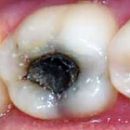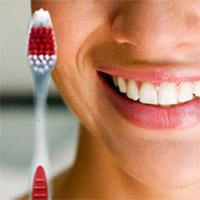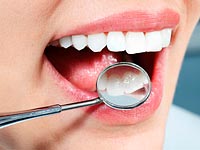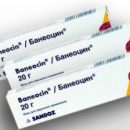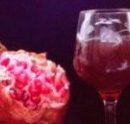What are the teeth whitening methods? Is it possible to whiten your teeth at home? Answers to these questions you will find in the article.
Content
Estimation of centuries on the teeth are judged by the success and attractiveness of a person. Healthy teeth in a woman - there will be a healthy wife and healthy children. Strong teeth in a man - if that, digs and snacks delicious root or bitter. Snow-white maiden smile means an air creature, nothing coarser than floral nectar, does not use.
However, white and healthier teeth did not everywhere were considered a sign of beauty. Vietnamese and Japanese ever painted teeth in black. The coloring substance is also terribly smelled, which attached an additional flavor to local beauties. In Pakistan, some eats have inscribed the front teeth, and then chewed certain leaves: after this procedure, the spinal surface acquired bright red color.
Among the exotic customs - drill holes in the fangs and insert pebbles, flowers, rings and a mirror (here «Grow legs» Modern Skyling!). Stopping a groove on the front teeth - so that it is more convenient to have a rope of vegetable fibers, holding one end in the teeth. Calculate the teeth with a file - a hunter needed fangs, like a predator (by the way, in Ethiopia to prove its «Profitability» The young man should have a snack not too thin tree). Well, the crown of the dental «Design» - generally remove part of the teeth and bring them sacrificing the gods.
To understand these stomatological transformation symbols is difficult. One thing is clear: in any culture and at any time without «Right» Tooth species - Nowhere. Take a modern person: you want to look successful today - demonstrate 32 flawless teeth. And if the nature of flawlessness stumbled, you comply with the dentist: fix bite, braces, prosthetics or at least whitening.
Basic teeth whitening methods
Bleaching technologies today quite a lot. First you need to remember that technology is divided into home and professional.
Homemade
Method 1. The arsenal of home equipment includes chewing gum, toothpastes (based on their action - abrasive principle, that is, stains are removed from the surface with various solid particles), rinsers, gels and special systems. It must be said that the dentists are very skeptical about the whitening properties of Paste and Zhwakhk: the maximum, to which they are capable - to fight freshly accurate on the surface of the enamel pigments of coffee, tea, red wine and t.D.
Method 2. Gels and special kits are more efficient: they are usually used by the course from 3 days to month. There is already a principle of operation - a chemical, based on the ability of various compounds to react with pigments and a dental flare and destroy them; Concentration of the active substance - 10-15%.
Preparations are applied to the standard casting of teeth - cape, which is put on the night or a few hours during the day. In some dental clinics, it is possible to order an individual cape, ideally adjacent to the teeth and non-irritating drug to the gums. True, due to the low concentration in the home sets of the active substance, the results are harmful and not too durable.
Professional
Such bleaching is carried out in the clinic on special equipment. And when choosing a specific method, it is worth consulting with several dentists not to get caught on «Spindle» leading for the clinic of the method that you may not come.
Method 3. Those who have teeth whites from nature, often it happens enough to return them natural color. To do this, be based on the mechanical (abrasive) principle of bleaching, for example, AIR-FLOW system. Using a special tips, the teeth are purified under pressure with a mixture of cleaning powder with water and compressed air. Bacteria, raid, interdental deposits, «Seal» pigment from tea and coffee, cigarettes disappear, which is a natural whiteness of your own teeth.
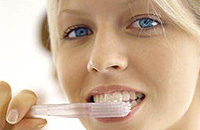 Method 4. Glorifying action on enamel has a whitening ultrasound. In addition to the shortcomings already listed, it also eliminates the tartar. The final stage of this whitening - the teeth are processed by polishing pastes that will be long «repel» Painting pigments.
Method 4. Glorifying action on enamel has a whitening ultrasound. In addition to the shortcomings already listed, it also eliminates the tartar. The final stage of this whitening - the teeth are processed by polishing pastes that will be long «repel» Painting pigments.
There is a technology that combines water and ultrasound: ultrasonic skaler. Due to the double action, it can cope even with the most dense and perennial deposits on the teeth.
Method 5. The most common and familiar professional teeth whitening method can be called chemical bleaching. The active substances are used as at home bleaching (carbamide peroxide, urea peroxide, hydrogen peroxide, chlorides), but the concentration above, and, it means, the result will appear faster - for 1-2 half-hour sessions. Chemical method allows you to whiten the teeth deep enough and strongly. There are options for its use, in which the impact on the teeth is limited to the dental office, sometimes wearing a familiar kappa we are supposed to be at home.
The effect of chemical bleaching lasts from 2 to 5 years, then the procedure can be repeated.
An important condition for chemical teeth whitening is the absence on visible surfaces of seals, composite materials, veneers, prostheses, pins and T.D. Foreign materials are completely different than natural tissue, react with active chemical elements, and homogeneous whitening will be difficult to achieve. Especially for such cases invented laser whitening technology.
Method 6. Laser whitening is less gentle, but a more efficient way to influence, firstly, deeper on the tooth fabric, and secondly, point. That is, the doctor works literally as an artist, adjusting the degree of impact on each part of the tooth.
The laser activates a special chemical composition applied to enamel, and cleaning occurs literally at the molecular level. This is the fastest way: you can whiten the teeth for 8-10 tones in a clock session! But the most expensive compared to the rest, in addition, the oral cavity must be fully prepared: all seals on the spot, caries and periodontalosis are cured, no cracks and scuffs on the gums.
Method 7. When photovolving, a halogen light is capable as a catalyst. Again, a special composition is applied to the tooth, from which oxygen spreads out with dark spots under the influence of light. A feature of the method is that it is suitable for sensitive teeth, for teeth with cracks and chips, loose fillings and even greasy roots - such «firefighter» Method for postponing visit to dentist. Minus - bleaching is too dazzling (effect «Porcelain» teeth), and this is not everyone goes. But when properly leaving the color can be preserved for life.
In advertisements of the dental clinics, the terms conservative and transformative whitening. The first is that the most return to the teeth of natural color, that is, simply a thorough professional cleaning that does not affect the structure of the teeth. Visually such teeth look white and brighter. The second type of bleaching implies a more serious impact - a soft abrasive on the surface of the enamel or, as in the case of photocuration, on the whole tooth in general.
And a little about security. A specific medical joke states that the greatest harm to the patient can apply and himself, the doctor's debt - to help him in this. Translated by «Stomatological» This means: if you do not demand a doctor to make a smile Eddie Murphy at all costs (under the motto: «I will pay everything!»), let it with violation of technology, exposure time and, despite the caries, then all bleaching technologies are absolutely harmless.

